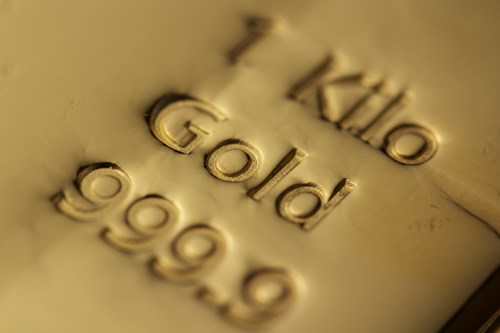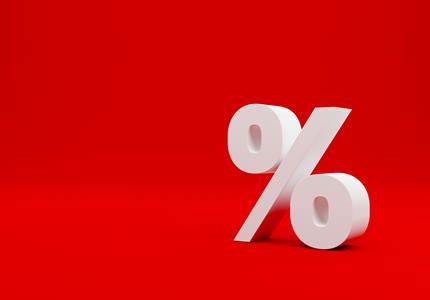

Boscher's Big Picture - Likely winners in the post COVID-19 investment world
Global financial markets are continuing to adjust to the likely environment ahead as economies gradually emerge from lockdown and activity resumes. Markets have been buoyed by the staggering policy response from central banks and governments, which is designed to underpin the financial system and ensure a strong economic recovery. Whilst much uncertainty remains about how and when normal economic activity will resume, and it will probably take years for the legacies of the COVID-19 crisis to make themselves known, it is clear that a number of attractive investment opportunities are emerging.
Technology stocks have been strong performers both before and throughout the crisis and are very likely to continue this trend moving forward. In a low growth world characterised by an ageing demographic and shrinking work forces, it is imperative that governments and companies invest significantly in technology in order to boost productivity and improve long-term growth prospects. This is also a necessity to meet increasingly important environmental challenges. In addition, one of the most important lessons emerging from this crisis is that we are all having to learn to work, communicate and spend our leisure time differently with technology playing a huge part in this. Many of these changes to everyday life will likely be longer-lasting and technology will play an even bigger role in our lives moving forward.

Of course, the biggest winners in technology in the future may not necessarily be the FAANGs (Facebook, Amazon, Apple, Netflix, Alphabet – Google), that have performed so strongly since the 2008 Global Financial Crisis; although the outlook for these companies continues to look favourable. The pharmaceutical, biotech and life sciences sector could emerge as a new winner with so much money being poured into drug and vaccine research, not just for COVID-19. Another growth theme could revolve around 5G, which is about so much more than just faster connectivity. The combination of 5G-enabled speed, responsiveness and reach could unlock exciting capabilities in other hot trends such as self-driving cars, drones, virtual reality, AI and the Internet of Things.

Healthcare stocks are another potential beneficiary of the new environment. Governments, individuals and companies are spending increasing amounts of income on healthcare provision in an ageing world with increasing life expectancy. For example, in the US, household expenditure on health has been rising twice as fast as median income since 2003, whilst total expenditure as a percentage of GDP is in a major uptrend almost everywhere. These trends are likely to be accelerated in the post COVID-19 world as governments dramatically increase spending on hospitals, healthcare workers, medicines, vaccines etc to ensure that they are better prepared to deal with both this and future pandemics.
The healthcare sector is not homogeneous and contains many sub sectors including; pharmaceutical companies, biotech and life sciences, managed care facilities and insurers. Many of these stocks have held up well during the past few months, but valuations remain reasonable after a prolonged period of underperformance. Consequently, this theme offers an attractive combination of strong growth in a low growth world, steady and rising income and reasonable value.
Emerging markets, and Asia in particular, also look attractive on a long-term view, especially after a multi-year period of underperformance relative to developed markets. Many emerging economies are growing at a superior rate to their developed counterparts and collectively, they are now a much bigger share of the global economic pie at over 60%. Many Asian economies, in particular, have much better demographics, productivity trends, rising educational standards and competitive skill sets, especially in technology. Also, China is likely to emerge from this particular crisis strongly, given the powerful monetary and fiscal tools available to the authorities to stimulate growth and the likely emergence of the yuan as a major competitor to the dollar as a reserve currency in large parts of the world. Many Asian economies will benefit from a recovering Chinese economy and stronger global growth. At the same time, it is likely that the US dollar will weaken over the coming years given the huge amount of fiscal and monetary stimulus undertaken by the Fed and US government, which will obviously result in very large and growing deficits over time. A weaker dollar is generally more favourable for Asia since it enables these countries to similarly ease monetary and fiscal policies without the fear of capital outflows. Lower energy costs are also a huge benefit for the region.
We are especially optimistic on the emerging consumer and not just in Asia. With stronger growth, better demographics and rapidly rising median income levels, consumption in many of these economies is growing at a faster rate. For example, it is estimated that as the world’s population grows from around 7.7bn to 8.3bn by 2030, middle income earners will rise from 3.2bn to 4.9bn with two thirds of these in Asia. These trends should ensure that many developed economy and emerging market companies focused on selling into this fast growing consumer market will deliver superior returns over the next few years.

Finally, there are a number of reasons to think that gold will perform very well over the next few years. Whilst the current crisis is very deflationary in the short-term, as global demand has dropped off a cliff, the combination of extremely accommodative monetary and fiscal policies for many years to come, together with likely supply side disruption can be expected to result in rising inflation further down the road. At the same time, in a world of zero interest rates, slow growth and increasing near term deflationary pressures, competitive devaluations could become a recurring phenomenon, which means that gold will probably be revalued higher relative to fiat currencies. Also, one of the arguments often used against gold is that is has no intrinsic value and offers no yield. Given that interest rates and safe haven yields will almost certainly stay near zero for a very long time, whilst currencies, including the dollar, are debased, gold will look increasingly attractive as a source of value, especially as the cost of holding gold will be negligible. Finally, in a potentially increasingly challenging, uncertain and volatile economic and political environment, gold is likely to be seen as a safe-haven asset.
As the global economy emerges from this crisis, we will undoubtedly see a number of other exciting investment opportunities develop. For example, select UK assets look good value on a relative basis and sterling remains undervalued. Well-managed global companies with dominant market share, strong balance sheets, healthy cash flow and manageable leverage are likely to be in demand. Similarly, companies that are able to offer sustainable dividend growth in a low yield world should perform strongly. We have been focused on capital preservation and ensuring that portfolios have sufficient liquidity over recent weeks and as the crisis has unfolded. In this respect, cash has been a very important defensive asset and source of liquidity. We are not out of the woods yet and there are plenty of reasons to remain cautious. However, we are naturally keen to take advantage of what we hope will be a powerful recovery with a particular emphasis on our preferred long-term themes and ideas and are sticking with our tried and tested investment disciplines.


